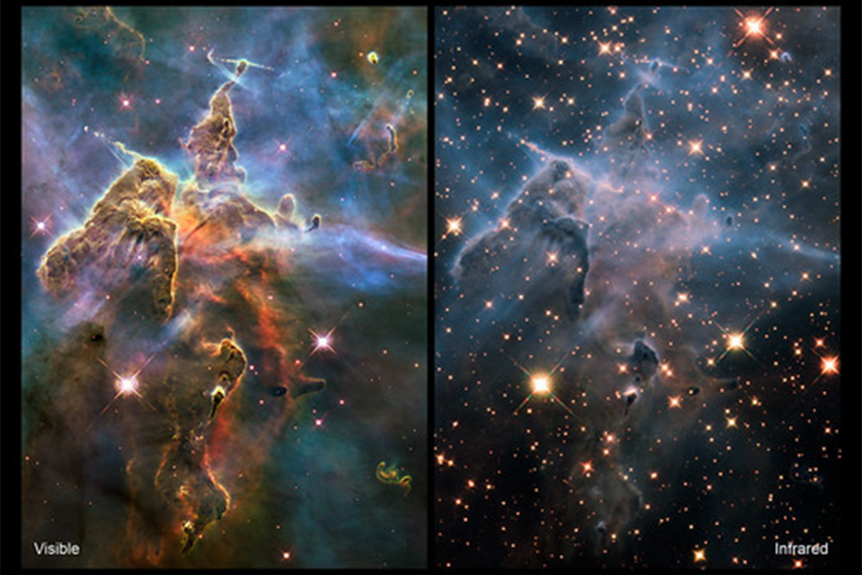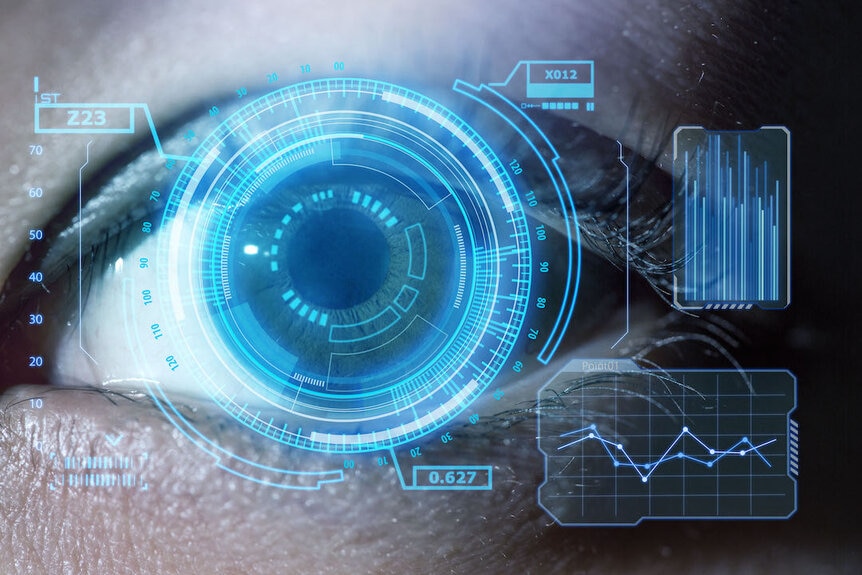Create a free profile to get unlimited access to exclusive videos, sweepstakes, and more!
Can You Really Shine Your Eyes? The Science Behind 'Pitch Black' and Enhanced Vision
Riddick! What do your Furyan eyes see?

When we were first introduced to Richard B. Riddick in the 2000 science fiction film Pitch Black (now streaming on Peacock!) a few things were immediately apparent. The first was the rippling charisma of turn-of-the-century Vin Diesel and the second was his eyes. Those eyes make him good at seeing in the dark — something which continues to come in handy for Riddick — and incredibly sensitive to daylight.
There is some contention in the source material and among fans regarding how Riddick got his atypical eyesight. Its origin is complicated because Riddick tells different stories depending on which part of the expanded mythos you’re consuming. In the video game The Chronicles of Riddick: Escape From Butcher Bay it is suggested both that his eyeshine is the result of a surgical procedure and that it is a dormant trait of Riddick’s species. In fact, the game makers made the sequence intentionally vague to maintain some of the mystery.
That said, we prefer the story Riddick gives about his eyes in Pitch Black: His vision is the result of a surgical shine job he received on a prison planet in exchange for 20 menthol Kools. Even if it’s untrue, it feels like the sort of thing his character would do. And, it has us wondering... are there real-life ways to get night vision that don't involve felony convictions and interplanetary prison surgery?
We already have enhanced vision, from a certain point of view
We’ve already developed incredible superhuman vision technologies in the real world, depending on your point of view. The telescope allows even amateur enthusiasts to peer deep into the cosmos and glimpse distant worlds. The microscope does the same thing for the very small, allowing people to see things hundreds or thousands of times smaller than we otherwise could. And enhanced vision isn’t just a matter of size.
Humans are also naturally limited in terms of frequency. The portion of light we’re capable of seeing is only a very small fraction of the full electromagnetic spectrum. Radio waves, microwaves, and infrared are all types of light with wavelengths too long for us to see. On the other end of the spectrum UV, X-ray, and gamma rays are too narrow for us to see with our eyes, but we can see them with our instruments.
Infrared technologies, commonly known as heat vision, allow us to see the temperature of things visually by capturing the otherwise invisible infrared radiation flaring off of people and objects in the form of heat. Those same abilities are also useful when peering into the cosmos. Many objects in space are so distant that their light is redshifted too far for us to see, or they are obscured by gas and dust with only their heat to let us know they are there, shrouded behind vast galactic clouds. Other objects spit out radio, X-ray, or gamma rays that we wouldn’t be able to see with even the most powerful visible light telescopes.
Only by capturing all of the light available, even and especially the light we can’t usually see, can we tell a complete story of what’s happening in the universe. Of course, that’s not really what we’re hoping for; we want that vision piped directly into our brains. It wouldn’t have been as cool if, instead of just peering into the monster-filled night, Riddick picked up a fancy camera and then looked at a screen translating the images. So, what about upgrading our eyes?
The Current State of Bionic Eyes
Ocumetics Technology Corporation is one of several companies and research groups working on the next phase of human vision. Their product, the Bionic Lens, is intended as an intraocular device replacing diseased or damaged parts of the body's visual system. Technologies like this are aimed primarily at folks with degenerative vision in need of a replacement retina, but once people start getting enhanced vision, it won’t be long before everyone starts wanting it. Why should grandma be the only one with super-vision just because she has age-related macular degeneration?
The idea is that by replacing the body’s native lens and/or retina with a synthetic one, you can not only relieve any degeneration, but you can also offer a number of improvements like clear vision at much further distances. Moreover, as reported by Futurism, the artificial lens could potentially link up with other technologies to project your smartphone into your field of view or share your POV on a screen or with another person who also has a Bionic Lens. That takes care of the telescoping and microscoping capabilities of enhanced vision, but what about non-visible light?
Researchers from the School of Biomedical Engineering at the University of Sydney developed a prototype device called the Phoenix99 which succeeded in giving enhanced vision to the user. That user just so happened to be a sheep. Rather than replacing or enhancing the lens, their device bypasses the first part of vision by capturing its own visual data and sending it directly to the brain.
RELATED: Sheep with bionic eyes foreshadow human cyborgs
That means that a device like that isn’t limited to capturing light in visible wavelengths. There’s nothing stopping us, for instance, from capturing infrared light and delivering that as if it were visible, the same way infrared cameras do. Taking that type of technology to its logical extreme suggests that in the future our vision might be limited only by the technology we’re able to connect to our visual circuits. And visual upgrades will only ever be a new lens or a software update away.
Right now, these technologies remain in their infancy. The results for the few folks are murky and lack detail, but scientists are working on that. Researchers at the University of Oregon are developing new types of implants with complex, fractal surfaces which appear to improve neuron connections and could lead to even better visual results.
When people of the future lay in their backyards and stare up at the night sky, they might see something wholly different not because the sky has changed but because our eyes have.
See Pitch Black, now streaming on Peacock, while you still have the right kind of eyes to watch it.
Originally published Feb 1, 2023.




























